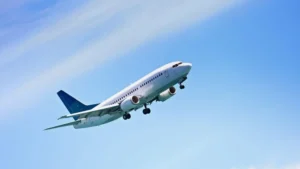© 2025 AffordableJourney. Built with care by our team. All rights reserved.
Trekking the Highlands of Papua New Guinea: What You Need to Know
By Hannah Greer
The highlands of Papua New Guinea (PNG) are often described as one of the world’s last frontiers — a place where rugged mountains rise abruptly from dense jungles, tribal cultures thrive in their traditional ways, and the air is filled with the hum of untouched nature.
For adventurous travelers seeking to combine raw wilderness with deep cultural immersion, trekking in the PNG highlands offers an experience unlike any other. But it’s not a trip to take lightly. The terrain is challenging, the infrastructure minimal, and the logistics complex. Yet, for those willing to push beyond comfort zones, the rewards are breathtaking views, unforgettable encounters, and stories to tell for a lifetime.
In this post, I’ll share my journey through Papua New Guinea’s highlands — from essential planning tips to personal moments on the trail — to help you prepare and get the most from your own adventure.
Why Trek the Papua New Guinea Highlands?
Image suggestion: Panoramic view of Papua New Guinea’s mountainous landscape, with mist rolling over jagged peaks.
The highlands region of PNG is home to some of the most diverse indigenous cultures in the world. Over 800 languages are spoken across the country, and many tribes maintain traditional lifestyles, including vibrant dress, unique rituals, and ancient customs.
Unlike more popular trekking destinations, PNG’s highlands remain largely off the beaten path. This means fewer tourists and more authentic experiences. You’ll hike through dense rainforests, climb volcanic slopes, and cross rushing rivers while observing a landscape that looks almost prehistoric.
Essential Planning: Permits, Guides, and Safety
Before you pack your boots, it’s crucial to understand that trekking here requires careful preparation.
Permits: Many areas require trekking permits issued by local authorities or the PNG Tourism Board. Work with a licensed tour operator to secure these.
Local Guides: Hiring a knowledgeable guide is essential. They navigate the terrain, communicate with local communities, and ensure your safety.
Health Precautions: Vaccinations (like yellow fever, typhoid, and hepatitis) are recommended. Bring insect repellent to guard against mosquitoes and take malaria prophylaxis if advised.
Fitness Level: The treks can be physically demanding — expect steep ascents, muddy paths, and unpredictable weather. Training beforehand helps.
Day 1: Arriving in Mount Hagen – Gateway to the Highlands
Image suggestion: Mount Hagen airport with small planes and mountainous backdrop.
Most treks into the highlands begin in Mount Hagen, the second-largest city in PNG. The airport is serviced by small propeller planes, often flying from Port Moresby or Lae.
Mount Hagen has a lively market where you can purchase supplies, and it’s an excellent place to meet porters and guides who will accompany you into the wilderness.
Day 2: Starting the Trek – Entering the Wild
From Mount Hagen, the journey heads into remote villages connected by narrow trails carved through thick jungle.
Image suggestion: Hikers crossing a wooden suspension bridge over a river, dense foliage on either side.
The early stages involve steep climbs and river crossings. The trail is muddy and often slippery, especially during rainy seasons. Along the way, you’ll notice intricate traditional gardens, wooden houses on stilts, and children playing barefoot.
Day 3: Meeting the Tribes – Cultural Immersion
One of the highlights of trekking the PNG highlands is the opportunity to meet indigenous tribes.
Many groups maintain traditional dress made from feathers, shells, and plant fibers. Their welcoming dances and music create a mesmerizing atmosphere.
Respect is key: always ask before photographing, and observe local customs closely. Some villages hold festivals or sing-sing events where visitors are invited to witness ceremonies.
Image suggestion: Tribal dancers adorned with colorful face paint and elaborate headdresses performing a traditional dance.
Day 4: Navigating Challenging Terrain – Lessons in Resilience
Expect days of hiking through steep ridges, river valleys, and dense forests. The weather can shift rapidly from blazing sun to heavy downpours.
Your guide will often help you find the safest path, sometimes using machetes to clear the way.
Sturdy waterproof boots and good rain gear are indispensable here.
Day 5: Camping Under the Stars – A Night to Remember
Most treks require camping in the wild. Sleeping under a canopy of stars, surrounded by the sounds of nocturnal wildlife, is both humbling and awe-inspiring.
Porters will set up tents and prepare simple meals. Cooking over an open fire adds a primal, communal feel to the trip.
Image suggestion: Campfire glowing in the dark with silhouettes of trekkers sitting around it, surrounded by forest.
Day 6: Reaching the Summit – Views That Take Your Breath Away
Depending on your route, you might summit one of the region’s volcanic peaks, such as Mount Giluwe, the second-highest mountain in PNG.
The ascent is tough — thin air and loose scree can test your endurance — but the panoramic views reward every step. From the top, the vast green jungle stretches endlessly, punctuated by swirling mists and distant mountain ranges.
Day 7: Returning to Civilization – Reflection and Farewell
The final day of trekking often feels bittersweet. After days immersed in raw nature and ancient cultures, returning to towns like Mount Hagen offers comfort but also a moment to reflect on the journey.
I spent my last evening recounting stories with fellow trekkers over hot cups of tea, already planning my next adventure.
Practical Tips for Your PNG Highlands Trek
Pack Light but Smart: Bring essentials only — quick-dry clothes, a good headlamp, personal hygiene items.
Cash is King: Credit cards are rare; carry enough local currency.
Respect Local Customs: Learn a few phrases in Tok Pisin, the widely spoken creole language.
Stay Connected: Internet is scarce; enjoy the digital detox.
Prepare for Altitude: Some treks reach over 4,000 meters; pace yourself and stay hydrated.
Why the PNG Highlands Changed Me
The trek challenged me physically, mentally, and emotionally. It stretched my limits and humbled me before the raw power of nature and the richness of culture.
But above all, it gifted me connection — to the land, to people, and to a part of the world that feels beautifully untouched by modern life.
If you crave adventure and authentic experiences, trekking Papua New Guinea’s highlands is a journey worth every step.




